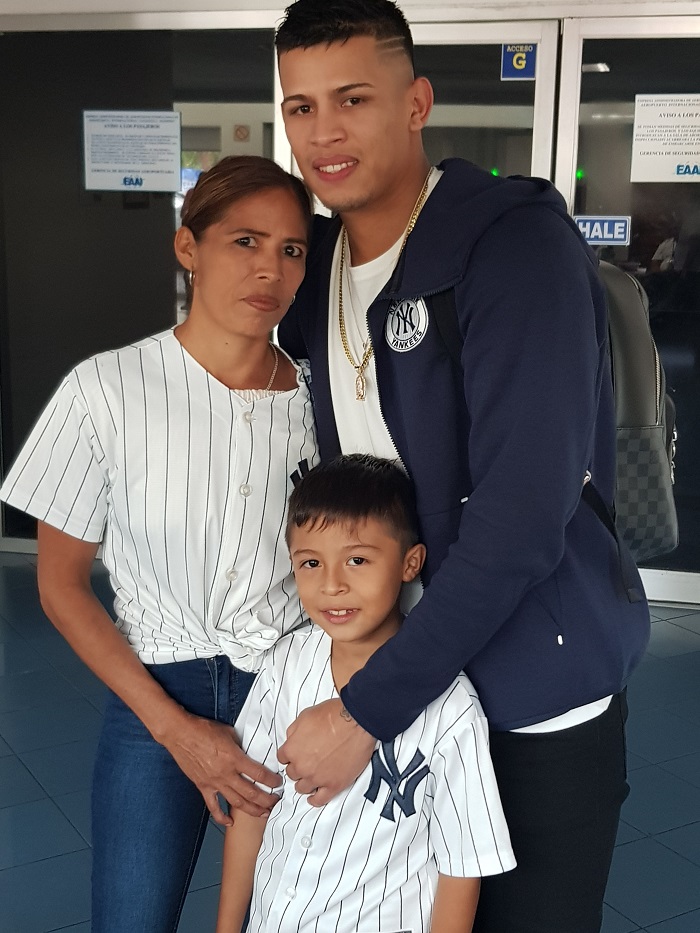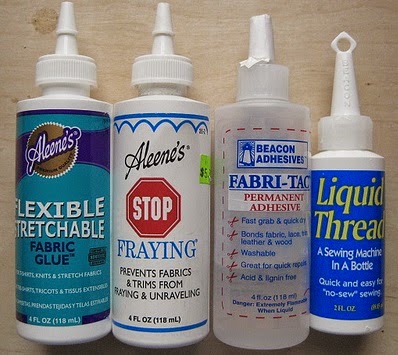La obra figurativa del mexicano Edgar Mendoza se mueve entre el realismo, el hiperrealismo y el realismo mágico. La mujer, el hombre, los dobles y una particular simbología pueblan sus lienzos creando imágenes sorprendentes a través de las cuales busca explorar y transmitir cuestiones metafísicas y aspectos psicológicos de sus personajes.
The figurative work of Mexican artist Edgar Mendoza moves between realism, hyperrealism and magical realism. Women, men, doubles and a particular symbology populate his canvases creating surprising images through which he seeks to explore and transmit metaphysical questions and psychological aspects of his characters.
____________________________________________________
Edgar Noé Mendoza Mancillas
(Durango, México, 1967-)
en / at Alicante, España / Spain
Edgar Noé Mendoza Mancillas es un pintor mexicano nacido en Durango en 1967.
Decidió dedicarse a la pintura en 1989, a los 22 años: "...estaba pasando por una crisis existencial sobre mi futuro. Qué hacer con mi vida y a qué me quería dedicar me tenía muy agobiado por aquellos años llenos de contrastes confusiones he inseguridades. Simplemente una mañana por accidente leí un cartel pegado en un árbol que invitaba a formar parte de la Escuela de Pintura de Durango y creo que en aquel momento toda aquella inquietud contenida desde pequeño se liberó resolviendo muchas de mis frustraciones, entonces empece a pintar."
La institución tenía muchos problemas internos y carencias en aquella época, y el realismo no formaba parte de la enseñanza. Aún así sus estudios le permitieron iniciarse en el oficio y obtener las herramientas básicas gracias a profesores como Guillermo Bravo y Marcos Martínez.
"Posteriormente emigro de Durango y empiezo una larga búsqueda en la que he tenido la oportunidad de recibir importantes consejos de un sinfin de personalidades en el campo de las artes plásticas tanto en México como en España." (1,3)
"Lumen", óleo sobre tabla / oil on wood, 89 x 75 cm., 2012
"Lumen" (detalle / detail)
«Poco antes de tomar la decisión de ingresar en aquella escuela de pintura compré una enciclopedia en abonos sobre arte. El pintor que más me impactó de todos los tiempos fue Johannes Vermeer. Admirar su pintura en aquellos libros influyó mucho para que yo quisiera dedicarme a esto.
Después poco a poco fui incrementando mi lista de favoritos, entre los cuales no solo se encontraban representantes figurativos sino que mi gusto empezó a disfrutar también con pintores abstractos y diversos artistas y corrientes del siglo XX.
Tengo una especial predilección por el arte muralista mexicano, en especial Diego Rivera, pero además en mi ciudad natal valoro mucho el trabajo de Francisco Montoya de la Cruz, cuyos murales percibí en vivo y en directo desde que yo era un niño.
En la actualidad no cabe duda que los pintores realistas e hiperrealistas contemporáneos de diversos países son mi gran influencia y referente. En España existen muchos y tengo la fortuna de ser amigo de varios de ellos.» (3)
"2 Pilares", óleo sobre tela / oil on canvas, 73 x 50 cm., 2006. Colección / Collection JG
"Fábrica del Tiempo II / Factory of Time II", óleo sobre tela / oil on canvas, 65 x 65cm., 2007
«El hiperrealismo, a grandes rasgos, está catalogado dentro del realismo como la tendencia que propone reproducir la realidad con más fidelidad y objetividad inclusive que una fotografía, por tomar una referencia.
Mi pintura sobre todo yo diría más bien que es solo realista, sin embargo sí que pretendo mostrar ciertos detalles con una minuciosidad propia del hiperrealismo ya que soy un admirador de está técnica, la cual significa para mi quizá la manera más actual de pintar la realidad. Con ello no quiero decir que sea la mejor, pero si la que posiblemente exprese técnicamente una visión más actualizada e influenciada por los medios tecnológicos de nuestro tiempo.
Sin lugar a dudas el hiperrealismo es todo un tema a debate en la actualidad ya que su depurada técnica en muchas ocasiones pareciera que solo transmite la copia fiel e inexpresiva de la fotografía, herramienta fundamental en la que se apoya el hiperrealismo y que continúa siendo una especie de sombra que impide a este tipo de pintura ser valorada sin prejuicios o radicalismos conservadores.» (1)
«Mi trabajo tenía una fuerte carga y sentido de realismo mágico, género del cual soy un admirador. Pero en la actualidad mi trabajo ha venido experimentando cambios tanto técnicos como conceptuales mediante los cuales me interesa más transmitir aspectos psicológicos y metafísicos con imágenes más limpias y sintetizadas.» (3)
"Ofelia 1 / Ophelia 1", óleo sobre panel / oil on panel, 35" x 22", 2015
"La Merienda / The Picnic", óleo sobre tela / oil on canvas, 200 x 200 cm., 2008
Colección / Collection Museo Europeo de Arte Moderno (MEAM)
«Determinar el sentido y el carácter de un personaje para que sea interesante resulta una tarea muy difícil a la hora de elegir retratarlo. Nuestra cultura ha fabricado estereotipos subliminales tanto de hombres como de mujeres que en muchas ocasiones resultan desfavorables. Pero es necesario desprenderse de prejuicios para sacarle partido a las expresiones internas de cualquier modelo independientemente de su apariencia física, su edad o su sexo.
En este momento yo encuentro interesante que las modelos expresen introspección pero también vitalidad existencial.» (2)
"Mutante / Mutant", óleo sobre lienzo / oil on canvas, 162 X 114 cm., 2013
Galería / Gallery Santiago Echeberria
«Cuando elaboro mis ideas y los entornos en los que se encuentran mis personajes, procuro llegar al limite sin rebasarlo sobre temas que pueden llegar a parecer violentos o ridículos. "Mutante" es una pintura que se puede confundir fácilmente con un tema "gore", pero esto es solo una excusa para provocar una primera impresión.» (2)
"Mutante / Mutant" (detalle / detail)
«When I create my ideas and the environments for my characters, I try to reach the limit ~ without going over it ~ in subjects that can seem violent or ridiculous. Mutante is a painting that can easily be confused with a “gory” subject, but this is only a device for generating a language necessary to achieve my main motive, which is the psychological concept.» (2)
"Las Tres Pilares / The Three Pilares", óleo sobre tela / oil on canvas, 130 x 97 cm.
Colección / Collection JG
Edgar ganó el Primer Premio de Retrato ModPortrait en la galería Artelibre (2013), con su obra "Fenotipo I"
Sus obras integran la colección del Museo Europeo de Arte Moderno (MEAM, Barcelona), así como colecciones privadas en España y México.
Ha participado en ferias de arte como ARTmadrid y en los concursos de la Fundación de las Artes y los Artistas, obteniendo Mención de Honor en el año 2008 con su pintura "La merienda".
Ha participado en exposiciones colectivas en el Museo Europeo de Arte Moderno (MEAM), el Museo Universitario de Alicante (MUA), y realizado una exposición individual en la Galería Godoy World Art en Madrid (2007).
"Sueño con Sillas / Dream With Chairs", óleo sobre tela / oil on canvas, 100 x 60 cm., 2007
Colección / Collection JG
Edgar Mendoza
Edgar Noé Mendoza Mancillas is a Mexican painter born in 1967 in Durango.
He decided took painting in 1989, at 22: "In that epoch of my life I was having an exisential crisis regarding my future. In those years full of contrasts, confusion and insecurities, I was overwhelmed thinking about what to do with my life or what did I want to do for a living.
Suddenly one morning I read a poster of the Art School in Durango inviting people to become a part of it and I believe that was the moment where all of the restlessness that I had, since I was a little released, solved many of my frustrations... then I started to paint."
The institution had many internal problems and shortages at that time, and realism was not part of the teaching. Even so, his studies allowed him to initiate himself in the trade and obtain the basic tools thanks to teachers like Guillermo Bravo and Marcos Martínez.
"Later I emigrate from Durango and begin a long search in which I have had the opportunity to receive important advice from an endless number of personalities in the field of plastic arts both in Mexico and Spain." (1,3)
"Corriente Alterna / Alternating Current", óleo sobre lienzo / oil on canvas, 200 x 200 cm., 2010
Colección / Collection Miguel Bañuls
"Corriente Alterna / Alternating Current" (detalle / detail)
«A short time before I took the decision to join Art School, I bought, in instalment an encyclopaedia about art. The painter that impacted me the most was Johannes Vermeer. To admire his paintings in that book had a great influence on me to become a painter.
Later, little by little I was increasing my list of favorites, between those were the figurative representations, but I started to like and enjoy abstract painters and a diversity of artists and genres for the XX century.
I have a special preference for the Mexican muralist art, specially Diego Rivera but, besides my hometown was appreciated the work of Francisco Montoya de la Cruz whose murals I saw live and direct since I was a boy.
At the moment, there is no doubt that contemporary realistic and hyperrealistic painters from different countries are a big influence and a reference for me. In Spain there are many and I have the fortune to be friend of a few of them.» (3)
"La Fábrica del Tiempo / The Factory of Time", óleo sobre lienzo / oil on canvas, 130 x 81 cm., 2006
"Avaricia / Greed", óleo sobre lienzo / oil on canvas, 130 x 97 cm., Colección / Collection JG
«Hyperrealism is broadly categorized within realism as the tendency that proposes to reproduce reality with more fidelity and objectivity than even a photograph, to take a reference.
My painting, above all, I would rather say that it is only realistic, however I do intend to show certain details with a thoroughness typical of hyperrealism because I am an admirer of this technique, which means for me perhaps the most current way to paint reality. With this I do not mean to say that it is the best, but the one that possibly expresses technically a more updated vision and influenced by the technological means of our time.
Undoubtedly, hyperrealism is a topic of debate nowadays, since its refined technique often seems to transmit only the faithful and inexpressive copy of photography, a fundamental tool on which hyperrealism is based and that continues to be a kind of shadow that prevents this type of painting to be valued without prejudice or conservative radicalism.» (1)
«My work had a strong sense of magical realism, a genre of which I am an admirer. But nowadays my work has been undergoing both technical and conceptual changes through which I am more interested in transmitting psychological and metaphysical aspects with cleaner and more synthesized images.» (3)
"El nido / The Nest", óleo sobre panel / oil on panel, 41" x 32", 2015
"Hielo / Ice", óleo sobre tabla / oil on wood, 34,5 x 19,5 cm., 2020
«To determine and express in a painting the essence and character of a person in an interesting way is actually very hard work. Our culture has created subliminal stereotypes of both men and women, sometimes very unfavorable. The artist needs to detach from prejudices and honor the inner expression of the person, independently of her or his physical look, age or gender.
I am interested in models who express introspection but at the same time existential vitality.» (2)
"Hielo / Ice" (detalle / detail)
"Muerte / Death", óleo sobre lienzo / oil on canvas, 45" x 32", 2017
"Fenotipo I / Phenotype I", óleo sobre panel / oil on panel, 140 x 86 cm., 2013
Fenotipo I, Primer Premio Modportrait, Galería Artelibre (2013)
«Es un retrato psicológico que requería mostrar muchos detalles faciales a manera de un mapa existencial externo he interno del personaje, una personalidad que necesitaba expresarse tanto por sus características físicas como por sus circunstancias que la han hecho.
El personaje retratado está representando un papel para tal fin, pero no tiene nada que ver con la modelo, una amiga que posó para caracterizar esta idea.
La atmósfera limpia contrasta con un rostro muy detallado que intenta conversar con el espectador sobre sus sentimientos y emociones independientemente de su aspecto hiperrealista. Elegir al modelo y determinar el sentido y el carácter de un personaje para que sea interesante resulta una tarea muy difícil a la hora de retratarlo.» (1)
"Fenotipo I / Phenotype I" (detalle / detail)
Phenotype I, 1st Prize Modportrait, Galería Artelibre (2013)
«It is a psychological portrait that required showing many facial details as an external and internal existential map of the character, a personality that needed to be expressed both by its physical characteristics and by the circumstances that have made it.
The character portrayed is playing a role for this purpose, but has nothing to do with the model, a friend who posed to characterize this idea.
The clean atmosphere contrasts with a very detailed face that tries to converse with the viewer about her feelings and emotions regardless of her hyper-realistic appearance. Choosing the model and determining the meaning and character of a model to make it interesting is a very difficult task when it comes to portraying it.» (1)
"El Escondite / The Hideout", óleo sobre lienzo / oil on canvas, 81 x 65 cm., 2008
"Presagio / Omen", óleo sobre lienzo / oil on canvas, 195 x 130 cm., 2006. Colección / Collection JG
Edgar won the First Prize for Portrait ModPortrait at Artelibre Gallery (2013), with his work "Phenotype I".
His works integrate the collection of the European Museum of Modern Art (MEAM, Barcelona), as well as private collections in Spain and Mexico.
He has participated in art fairs such as ARTmadrid and in the competitions of the Fundación de las Artes y los Artistas, obtaining Honorable Mention in 2008 with his painting "La merienda".
He has participated in group exhibitions at the European Museum of Modern Art (MEAM), at the University Museum of Alicante (MUA), and had a solo exhibition at the Godoy World Art Gallery in Madrid (2007).
"La Mudanza / The Move", óleo sobre lienzo / oil on canvas, 200 x 130 cm., 2008
_____________________________________________________
_____________________________________________________
Fuentes / Sources:
* Website
* (1) "El mapa existencial de ‘Fenotipo I’ / The Existential Map of Phenotype I"
Entrevista de / Interview by Sac-Nicté Calderón. "El siglo de Durango", 3/2014.
* (2) "Más allá de la violencia, un oasis / Beyond the Violence, an Oasis"
Entrevista de / Interview by por Deanna Elaine Piowaty, Combustus, 3/2014
* (3) "Emociones internas mediante imágenes metafísicas / Inner Emotions Through Metaphysical Images"
Entrevista de / Interview by José Eduardo Silva & Isabel Gore. "Line and Stylish Art Magazine", Nº 8, 4/2014.
Imágenes publicadas con autorización del artista (¡Muchas gracias, Edgar!)
Images published here with artist's permission (Thanks a lot, Edgar!)































![An American Tail [1986] [DVD5-R1] [Latino]](http://iili.io/FjktrS2.jpg)









